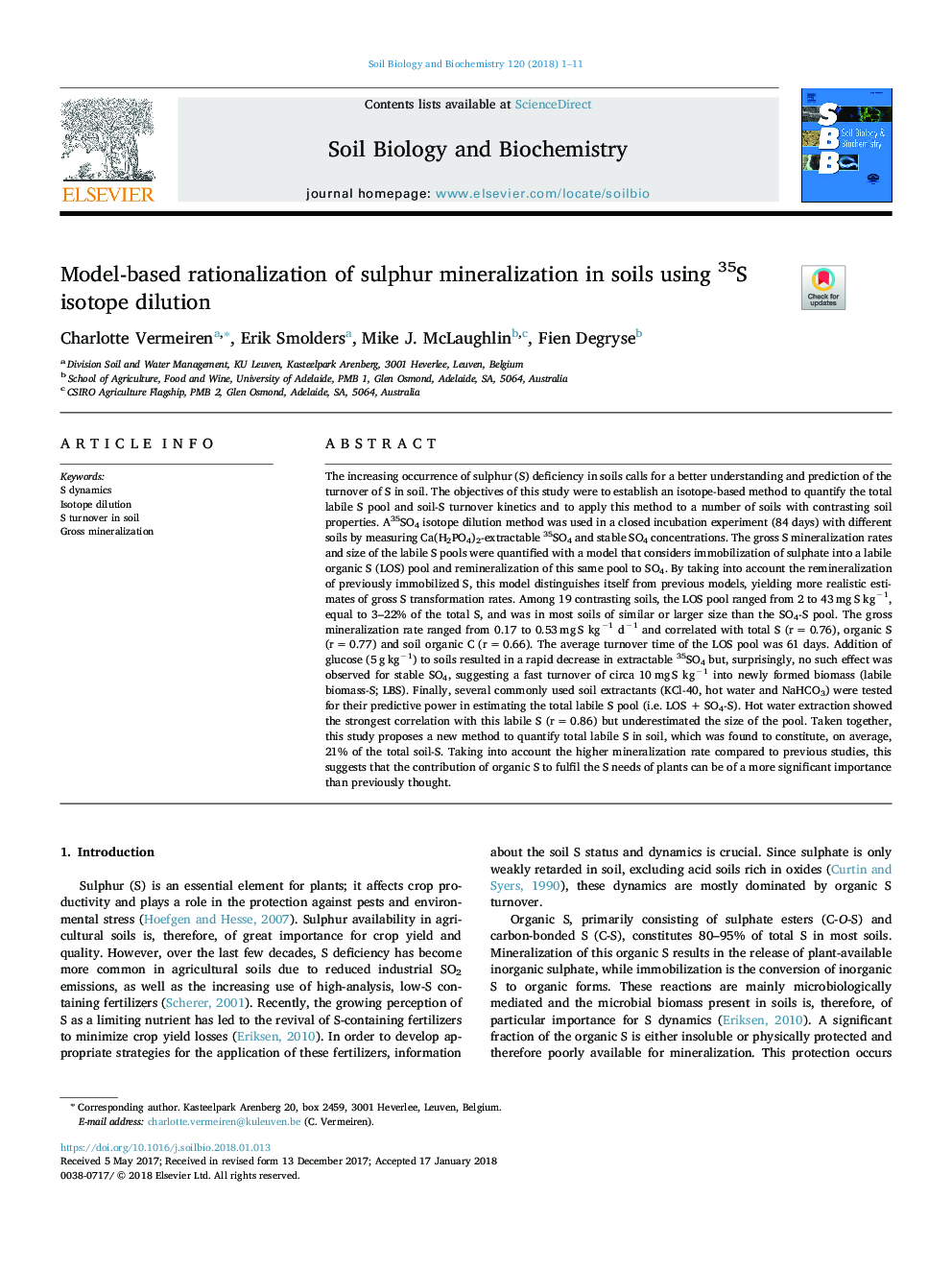| Article ID | Journal | Published Year | Pages | File Type |
|---|---|---|---|---|
| 8362758 | Soil Biology and Biochemistry | 2018 | 11 Pages |
Abstract
The increasing occurrence of sulphur (S) deficiency in soils calls for a better understanding and prediction of the turnover of S in soil. The objectives of this study were to establish an isotope-based method to quantify the total labile S pool and soil-S turnover kinetics and to apply this method to a number of soils with contrasting soil properties. A35SO4 isotope dilution method was used in a closed incubation experiment (84 days) with different soils by measuring Ca(H2PO4)2-extractable 35SO4 and stable SO4 concentrations. The gross S mineralization rates and size of the labile S pools were quantified with a model that considers immobilization of sulphate into a labile organic S (LOS) pool and remineralization of this same pool to SO4. By taking into account the remineralization of previously immobilized S, this model distinguishes itself from previous models, yielding more realistic estimates of gross S transformation rates. Among 19 contrasting soils, the LOS pool ranged from 2 to 43â¯mgâ¯S kgâ1, equal to 3-22% of the total S, and was in most soils of similar or larger size than the SO4-S pool. The gross mineralization rate ranged from 0.17 to 0.53â¯mgâ¯S kgâ1 dâ1 and correlated with total S (râ¯=â¯0.76), organic S (râ¯=â¯0.77) and soil organic C (râ¯=â¯0.66). The average turnover time of the LOS pool was 61 days. Addition of glucose (5â¯gâ¯kgâ1) to soils resulted in a rapid decrease in extractable 35SO4 but, surprisingly, no such effect was observed for stable SO4, suggesting a fast turnover of circa 10â¯mgâ¯S kgâ1 into newly formed biomass (labile biomass-S; LBS). Finally, several commonly used soil extractants (KCl-40, hot water and NaHCO3) were tested for their predictive power in estimating the total labile S pool (i.e. LOS + SO4-S). Hot water extraction showed the strongest correlation with this labile S (râ¯=â¯0.86) but underestimated the size of the pool. Taken together, this study proposes a new method to quantify total labile S in soil, which was found to constitute, on average, 21% of the total soil-S. Taking into account the higher mineralization rate compared to previous studies, this suggests that the contribution of organic S to fulfil the S needs of plants can be of a more significant importance than previously thought.
Keywords
Related Topics
Life Sciences
Agricultural and Biological Sciences
Soil Science
Authors
Charlotte Vermeiren, Erik Smolders, Mike J. McLaughlin, Fien Degryse,
